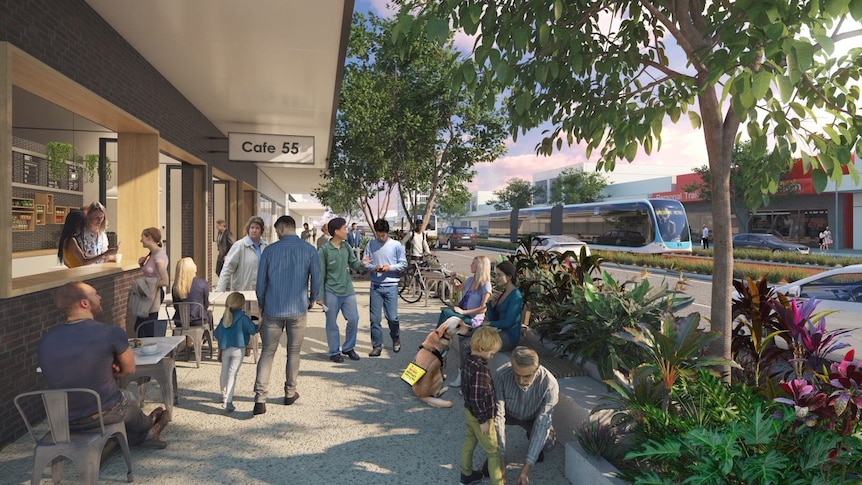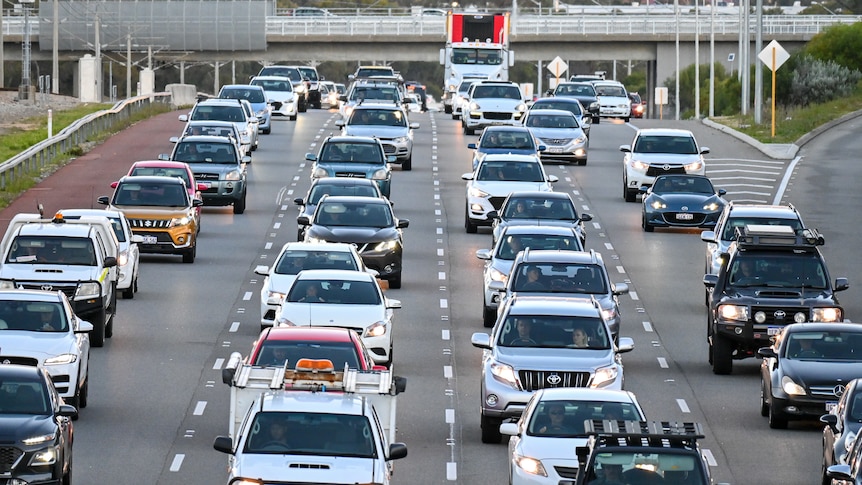The viability of a tunnel stretching nearly 12 kilometers from Bald Hills to Kedron and costing at least $9.5 billion is being investigated.
Key points:
- A study has found congestion in the city’s north-west is costing $312 million per year
- The $10 million study was funded by the federal government
- Two tunnels and a bus network were costed as a part of the study
The six-lane tunnel, which would connect with the Airport Link, was part of the outcome of a $10 million federally-funded study undertaken over two years by Brisbane City Council.
It found northern Brisbane’s annual congestion and public transport crowding was costing $312 million per year.
That would rise to $538.5 million by 2031 and $859 million by 2041.
The study found significant community opposition towards any surface road or rail development through the North West Transport Corridor, which had been reserved by the state government since the 1980s.
Stretching from Carseldine to Alderley and including the Chermside Hills Reserve, the land was a “significant biodiversity corridor” likely to contain a number of observed threatened species, the study.
The North West Transport Network study investigated several underground alternatives, including a motorway and heavy rail option, as well as complementary above-ground bus and active transport solutions.
Bus network, another tunnel costed
Brisbane Civic Cabinet Chair for Infrastructure Andrew Wines said all levels of government needed to work together on transport solutions for Brisbane’s north.
“This study demonstrates that doing nothing isn’t an option,” Mr Wines said.
“Brisbane is the fastest growing capital city in the country and our northern neighbors in Moreton Bay are also growing quickly.
The study also assessed building a complementary Bus Rapid Transport system along Gympie Road from the Northern Busway at Kedron to Aspley at a cost of between $758 million and $1.1 billion.
A longer-term option of extending the underground motorway with an 11 kilometer tunnel from McDowall to Toowong by 2041 was also considered.
That tunnel was cost at between $7.8 billion and $11.5 billion.
Brisbane City Council Labor leader Jared Cassidy said Brisbane’s LNP council had announced a multi-billion dollar proposal “without saying when it will be funded”.
“It’s a bit rich for [Brisbane Mayor] Adrian Schrinner to put forward a multi-billion dollar proposal when his administration can’t even complete their own projects,” Mr Cassidy said.
“If this LNP administration can’t finish the North Brisbane Bikeway – how can it propose a multi-billion dollar plan for this North West motorway?
He said it was a proposal for a tolled tunnel.
“This is a backflip from the LNP,” he said.
“It is there in black and white – that the North West motorway will have tolled options considered.
“This plan is meant to be a missing link for the motorway network – but this council is missing the mark.”
Call for government cooperation
Mr Wines said the study had been sent to the federal and state governments, as well as Infrastructure Australia, for consideration.
“Clearly what has been put forward in this study is far beyond the means of local government,” he said.
“We are eager to talk further with the state and federal government about these proposals and hear about any other ideas they might have to deal with northern Brisbane’s transport needs.”
He said the study showed the economic cost of north Brisbane’s congestion would be $1.5 million a day within a decade which was “totally unacceptable”.
.

